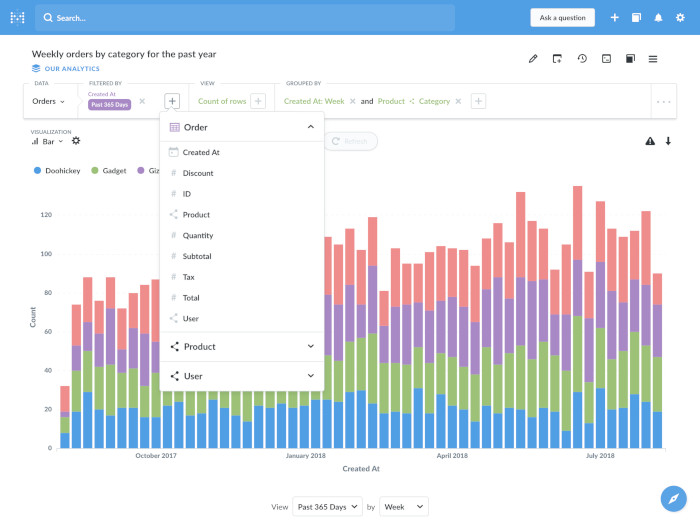Aggregation expressions can use bothuser-defined and system variables.
Variables can hold any BSON type data.To access the value of the variable, prefix the variable name withdouble dollar signs ($$); i.e. '$$<variable>'.
If the variable references an object, to access a specific field in theobject, use the dot notation; i.e. '$$<variable>.<field>'.
User Variables¶
User variable names can contain the ascii characters [_a-zA-Z0-9]and any non-ascii character.
User variable names must begin with a lowercase ascii letter [a-z]or a non-ascii character.
System Variables¶
MongoDB offers the following system variables:
Metabase creates beautiful graphs and charts, with an easy-to-use dashboard where everyone can create, organize and share exceptionally visualized data. It supports a great number of databases, including Postgres, MySQL, Druid, MongoDB, SQLite and more. Setup literally takes 5 minutes. The Databases tab in MongoDB Compass has a Create Database button. In MongoDB Compass, you create a database and add its first collection at the same time: Click Create Database to open the dialog Enter the name of the database and its first collection.
Description | |
|---|---|
A variable that returns the current datetime value. | |
| A variable that returns the current timestamp value.
|
| References the root document, i.e. the top-level document, currentlybeing processed in the aggregation pipeline stage. |
References the start of the field path being processed in theaggregation pipeline stage. Unless documented otherwise, allstages start with
| |
A variable which evaluates to the missing value. Allows for theconditional exclusion of fields. In a For an example of its usage, see Conditionally Exclude Fields. | |
| One of the allowed results of a $redact expression. |
One of the allowed results of a $redact expression. | |
One of the allowed results of a $redact expression. |
Mongodb metabase. Share improve this question follow asked Apr 5 '19 at 9:28. 2,742 3 3 gold badges 29 29 silver badges 61 61 bronze badges. Have you used moment library to perform such operation? – Ashh Apr 6 '19 at 19:44. This is through the metabase query builder, no coding can be used. Metabase is the easy, open source way for everyone in your company to ask questions and learn from data. 5 minute setup (We're not kidding); Let anyone on your team ask questions without knowing SQL.
Definition¶
$subtract¶
Mongodb Metabase
Subtracts two numbers to return the difference, or two dates toreturn the difference in milliseconds, or a date and a number inmilliseconds to return the resulting date.
The $subtract expression has the following syntax:
Metabase Oracle
The second argument is subtracted from the first argument.
The arguments can be any valid expression as long as they resolve to numbersand/or dates. To subtract a number from a date, the date must be thefirst argument. For more information on expressions, seeExpressions.
Examples¶
Consider a sales collection with the following documents:
Subtract Numbers¶
Metabase Mongodb Array
The following aggregation uses the $subtract expressionto compute the total by subtracting the discount from thesubtotal of price and fee.
The operation returns the following results:
Subtract Two Dates¶
The following aggregation uses the $subtract expressionto subtract $date from the current date, using the systemNOW (available starting in 4.2) and returns the difference inmilliseconds:
Alternatively, you can use the Date() for the current date:s
Both operations return documents that resemble the following:
Subtract Milliseconds from a Date¶
The following aggregation uses the $subtract expressionto subtract 5 * 60 * 1000 milliseconds (5 minutes) from the '$date'field:
The operation returns the following results:
© MongoDB, Inc 2008-present. MongoDB, Mongo, and the leaf logo are registered trademarks of MongoDB, Inc.
